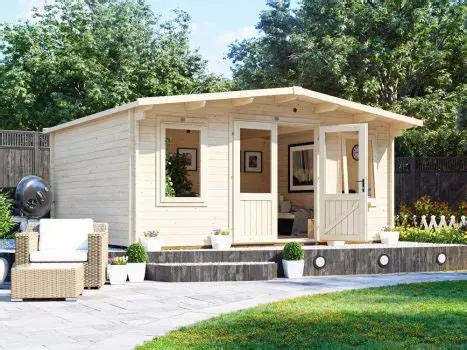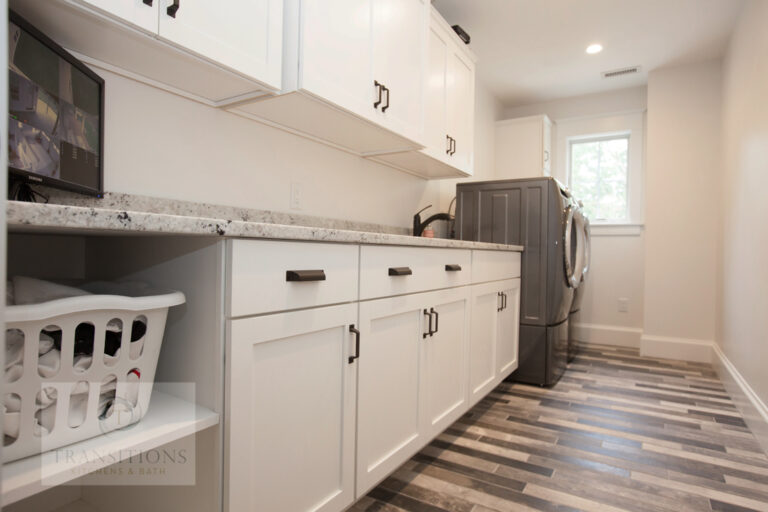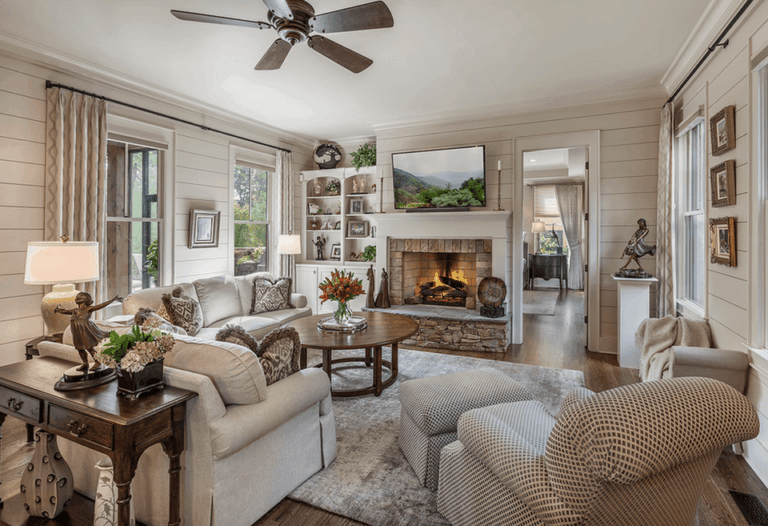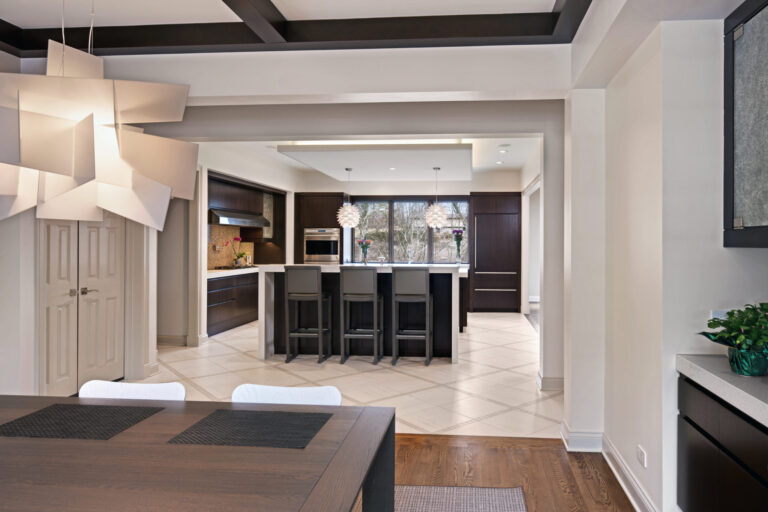Design a Bedroom That Improves Your Sleep Quality
Creating a bedroom that truly supports restful, rejuvenating sleep isn’t just about selecting aesthetically pleasing décor; it’s about making informed design choices, choosing the right products, and creating an environment engineered for relaxation. Whether you struggle with insomnia, wake too early, or simply want better rest, this guide will walk you through the why, what, and how of designing a bedroom that improves sleep quality. We’ll cover foundational principles, benefits of applying them, and then dive into five real-world product picks that tie directly into making your bedroom a high-performance sleep sanctuary.
Why the Design of Your Bedroom Matters
The role of the environment in sleep
Your bedroom isn’t just another room; it’s the physical space where your body and mind disengage from the day and embark on recovery mode. Experts at IKEA point out that factors like room temperature, humidity, lighting, and layout all impact sleep quality.
For instance, if your bedroom is too bright, cluttered, noisy, or uses materials that irritate allergies, your body’s ability to relax is compromised. A well-designed bedroom supports your circadian rhythms, lowers stress signals, reduces interruptions, and fosters deeper sleep cycles.
The benefits of designing for sleep
When you intentionally design your bedroom for sleep quality, you gain multiple advantages:
-
Fewer awakenings and more consolidated sleep, which improves mood, cognitive performance, immune function, and general well-being.
-
Reduced physical discomfort (e.g., less back or neck pain) when your mattress, pillows, and layout support healthy posture and movement.
-
Lower likelihood of needing sleep aids or coping with insomnia because the environment itself is optimized.
-
Potential energy savings: A better-designed room may reduce overheating, excessive lighting, or noise, so your brain and body don’t fight the environment.
Core Design Strategies to Improve Sleep Quality
Choose calming colours and natural materials.
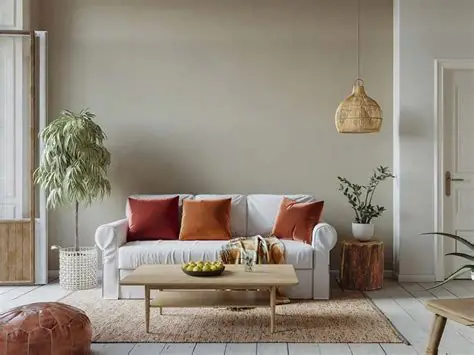
Calming Decor Earthy
Calming colours like soft blues, muted greens, warm neutrals, and natural textures support relaxation. Designers highlight that bedrooms painted or furnished in such palettes create a tranquil atmosphere instead of stimulating the brain.
Natural materials such as wood, linen, stone, and wool also connect your bedroom to biophilic (nature-inspired) design, which research suggests improves mental relaxation, air quality, and sensory comfort.
Benefit: These choices reduce psychological arousal before sleep, promote a restful mindset, and facilitate the brain’s shift into sleep mode.
Use-case: If you wake up feeling restless despite being tired, your brain might still sense ‘alertness’ signals from your surroundings (bright colour walls, high-gloss surfaces, synthetic textiles). Switching to natural textures and muted tones helps tune the bedroom to “rest”.
Manage light, sound, and temperature.
Light, sound, and temperature are major environmental cues for sleep. According to the data:
-
You want minimal disruptive light (especially blue light) in the evening to support melatonin production.
-
Sound interruptions fragment sleep; designers recommend sound-dampening materials or white noise to mask disruptions.
-
The ideal bedroom temperature is cool and constant; too hot or too cold disturbs sleep.
Benefit: Optimizing these three dimensions creates an environment where your body doesn’t have to fight external stimuli, enabling deeper, more restorative sleep.
Use-case: If you live in a noisy city or your room is exposed to streetlight, then blackout curtains sound absorbing rugs smart lighting will significantly improve your ability to stay asleep and fall asleep faster.
Prioritise support, ergonomics, and clutter-free space
Your furniture, mattress, pillows, and layout all matter. The design expert article from Homes & Gardens emphasises that a bed frame that allows airflow, a mattress with proper support, and keeping the space uncluttered are key.
Furthermore, allergens and chemical pollutants trapped in bedding, flooring, or paints can undermine sleep quality. The organisation Allergy Standards Limited points out that bedrooms should consider air quality, materials with low VOC emissions, and bedding that limits dust mites.
Benefit: This layer of design ensures your body is physically supported, comfortable, and free of distractions like irritants or clutter.
Use-case: If you wake up with nasal congestion, skin irritation, or general discomfort, your bedroom materials or layout may be part of the problem, choosing hypoallergenic bedding or rearranging furniture for better access and storage will help.
Real-World Product Picks to Enhance Sleep Quality
Below are five products that align directly with designing a bedroom for improved sleep. Each is described in detail: what it does, the problem it solves, why people need it, and how/where to buy (affiliate-style button links included).
Withings Sleep Tracking Mat
Overview: A smart sleep monitoring mat that sits under your mattress and tracks sleep cycles, breathing, heart rate, and disturbances.
Benefits: Provides objective data on how your environment and design changes are impacting your sleep. With this information, you can fine tune things like mattress firmness, room temperature, and lighting schedule.
Problem solved & use-case: If you redesign your bedroom but aren’t sure whether the changes are helping, this mat gives you clarity. Example: you switch to blackout curtains and a cooler room; Withings shows less wake time and more deep sleep.
Why you need it: Sleep quality is often subjective this tool gives actionable feedback so you can iterate on design improvements.
Where to buy: Available online via major electronics retailers.
Serta Sleep X Springbed Mattress
Overview: A premium springbed mattress with supportive springs and comfort layers, designed for full bed sets.
Benefits: Supports spinal alignment, promotes airflow (important in warmer climates), and offers a sleep surface that doesn’t trap heat or cause sagging.
Problem solved & use-case: If your current mattress is old, sagging, or causing you to wake up with aches, this upgrade gives you a solid foundation. In a bedroom designed for better sleep, mattress quality cannot be overlooked.
Why you need it: The bed is the central sleep element everything else supports it. Investing here pays dividends in sleep quality.
Where to buy: Available in Indonesia via OSCARLIVING. Buy Serta Sleep X Springbed Mattress
Dohm Yogasleep Sound Machine
Overview: A classic white noise machine that generates consistent ambient sound to mask external disturbances.
Benefits: Helps block noise from traffic, neighbors, or household, improves sleep continuity, and lowers arousal responses.
Problem solved & use-case: If you wake up to random noises or live in an acoustically poor room, this machine provides a simple, effective remedy.
Why you need it: Even with great design, external noise can ruin sleep this adds a layer of protection.
Where to buy: Available via global marketplaces.
Sun Zero Nolan Energy Blackout Curtain Panel
Overview: Heavy blackout curtain panel designed to block light, reduce heat transfer, and dampen some sound.
Benefits: By darkening the room and reducing external light/heat, these curtains support circadian rhythm, reduce early-morning wake-ups, and improve temperature control.
Problem solved & use-case: If you have streetlights, early sunlight, or high daytime heat entering your room, these curtains are a key design element.
Why you need it: Light and temperature are two of the biggest disruptors of sleep. Addressing them gives immediate improvement.
Where to buy: Widely available in multiple sizes.
Ashley Sleep Essentials 10-inch Memory Foam Mattress
Overview: A medium-firm memory foam mattress offering comfort, motion isolation, and support for two-way sleepers.
Benefits: Ideal for couples, sleepers who are easily disturbed, or those who want a softer feel while still having ergonomic support.
Problem solved & use-case: If your partner moves a lot, you feel every motion, or you switch sleeping positions frequently, this mattress reduces disturbance and aligns the body.
Why you need it: Sleep quality is not just “about falling asleep but also staying asleep.” Reduced disturbance means deeper, longer rest.
Where to buy: Available from large furniture retailers. Buy Ashley Sleep Essentials Mattress
How to Buy & Implement the Design
When you’re ready to translate these design ideas and products into your home, follow these steps:
-
Assess your current bedroom: Note temperature swings, light leaks, noise issues, mattress age, clutter, and material finishes (paint, flooring, bedding).
-
Prioritise your biggest disruptor: Is it heat? Light? Noise? Mattress sagging? Tackle the largest obstacle first (for example, blackout curtains and a sound machine if light/noise are big issues).
-
Budget wisely: Use a budget that covers both product cost and installation/adjustment (e.g., professional mattress delivery, curtain installation, room paint).
-
Choose compatible elements: Ensure product specifications suit your room size, climate (e.g., Indonesia’s humidity), and habit (sleeping times, partner use).
-
Install and test: After making changes, give your body a week or two to adjust. Use a tracker (like the Withings mat) or keep a sleep diary to monitor improvement.
-
Iterate: Use your data or experience to tweak maybe your mattress is great, but the walls still reflect heat, so add blinds or repaint with light colours.
-
Maintain: Replace bedding regularly, keep curtains clean, monitor mattress wear, and ensure the room stays uncluttered and optimized.
FAQs
Q1: How long will it take to see improvements in sleep after redesigning the bedroom?
Answer: It depends on the specific issue you’re addressing. For example, installing blackout curtains or a sound machine often results in noticeable improvements within a week or two. Upgrading a mattress or changing room layout may take longer (2-4 weeks) as your body adapts to the new support and environment. Tracking sleep patterns helps you assess when gains are stabilising.
Q2: Can I still use bright or strong colours if I love them, or should I switch everything to muted tones?
Answer: You don’t have to eliminate all colour, but the main surfaces (walls, large furniture pieces) should use calming tones. Strong colours can work as accent elements (throw pillows, art), but avoid them dominating. The aim is for the brain to perceive calmness and low visual stimulation when you enter the room.
Q3: My budget is limited what’s the single best product upgrade I should invest in for sleep quality?
Answer: If you must pick one, a quality mattress is the most impactful. It supports your body every night and affects both comfort and physiology. If your mattress is aging, sagging, or uncomfortable, upgrading to a supportive one (like one of the models listed) yields tangible improvements. Once that foundation is solid, you can address light, sound, and décor.


